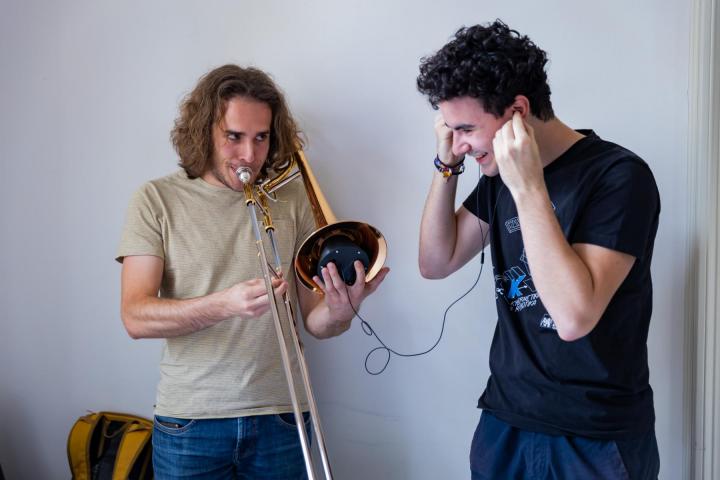
The programme of this year's Student Acoustic Seminar, which took place on 25 January at Faculty of Electrical Engineering, consisted of 11 conference papers. In the first morning session, undergraduate and graduate students presented their projects. The second block of presentations belonged to students of doctoral studies. In addition to representatives of various departments of CTU Faculty of Electrical Engineering, Zuzana Štanclová, a PhD student at Faculty of Natural Sciences of Palacký University in Olomouc, also presented at the seminar.
"At the Faculty of Electrical Engineering, students can study acoustics, for example, at the Department of Radioelectronics or the Department of Physics. Each department looks at acoustics from a different angle, focusing on different issues. Thanks to the Student Acoustics Seminar, we can learn from each other what research our colleagues are working on in the field," described Dr. Petr Honzík from the Department of Radioelectronics at the FEL CTU.
Silencer for ventilation and machine learning as a support tool
In several presentations, students discussed different types of microphones. Martin Helmich, for example, in his semester project dealt with the analysis of a prototype microphone array composed of MEMS microphones developed at CTU FEL by Ing. David Vagner and Ing. Jan Šedivý within the Open Audio Laboratory.
Microphone arrays can be used, for example, to isolate speakers or musical instruments in one room, when it is necessary to amplify the signal coming from a certain direction and, conversely, to attenuate the signal coming from other directions. This can be achieved, for example, by adding up the delayed signals from individual microphones.
Bc. Michal Reiser then presented the process of designing and manufacturing a component for experimental validation of the ongoing research on band attenuators based on the principle of bound states in the continuum. The motivation for this research is the damping of noise produced by fans used in HVAC systems.
"For example, if we used foam to damp the noise of a fan, it would start spinning faster because it would have to work harder to push through the necessary amount of air. Thus making that much more noise," Reiser outlined the problem. "Instead of broadband damping all the noise coming from the fan, we only block out significant frequencies in the spectrum. Specifically, for example, the blade frequency of the fan. This gives us the requirements for a silencer. It has to be aerodynamically shaped so as not to be an unnecessary source of pressuer loss and it has to have high attenuation in a relatively narrow frequency band," he continued, while a scale model of his silencer was circulated in the audience.
Bc. Aneta Furmanová presented in her paper the results of her research, which shows how machine learning methods can be applied in the modelling of infinite periodic structure transfer.
The available methods for calculating transmission by periodic structure are numerical only. The contribution of Aneta Furman's research is the formulation of an analytical equation extracted from the data on the problem to replace numerical computation. "This approach can be applied to general experimental data when individual parameters cannot be calculated numerically," Furman explained.
Inspiration for students
At the annual Student Acoustic Seminar, younger colleagues are welcomed into the audience alongside speakers from undergraduate, graduate and doctoral students.
"The seminar is also a great opportunity for younger students who are thinking about choosing acoustics as their future focus. Here they can get inspiration on what projects their colleagues are working on, who is teaching bachelor and master theses and which departments they can contact," said Dr. Petr Honzík.
Traditionally, members of the Czech Acoustical Society as well as other practitioners were invited to the audience. Students have the opportunity to meet representatives of companies and make important contacts in the field.